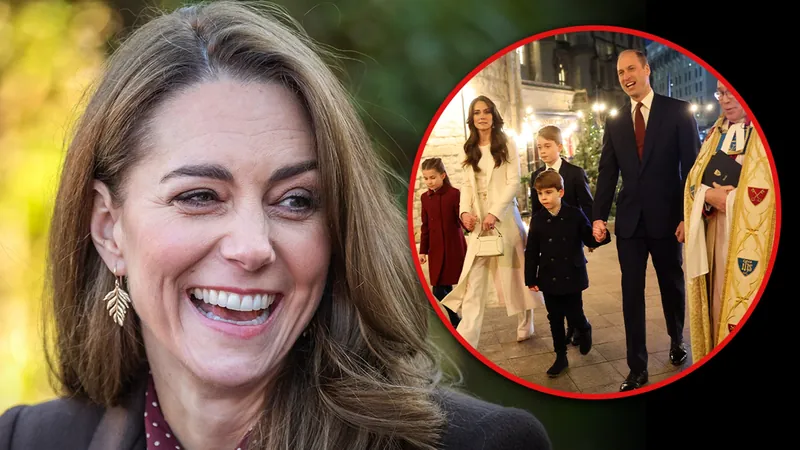
Stunning Revelation: 500-Year-Old Portrait of Mary Tudor Finally Identified!
2024-11-17
Author: Emma
Introduction
For centuries, a miniature portrait that dates back nearly 500 years has captured the intrigue and imagination of art historians, but only now has it been confirmed to depict none other than Mary Tudor, the renowned “Bloody Mary," rather than Katherine Parr, Henry VIII's last wife.
Discovery by Art Historian Emma Rutherford
Art historian Emma Rutherford spearheads this fascinating discovery, emphasizing the importance of meticulous details such as the noses of the two Tudor figures. “Mary had a distinctly bulbous and upturned nose, while Parr sported a more elegant, aquiline shape,” she explains, pointing to the significant visual cues that led to this newfound identification.
Significance of the Finding
The significance of this finding comes at a crucial time, as Mary Tudor’s character is set to emerge in the anticipated BBC1 series adaptation of Hilary Mantel's acclaimed work, "Wolf Hall: The Mirror and the Light". Lilit Lesser portrays the young Mary, who, in the storyline, navigates her tumultuous life with the weight of being branded a "bastard" following her father Henry VIII's annulment of his marriage to Catherine of Aragon.
Rutherford's Curatorial Journey
Rutherford's journey to this identification began while curating the exhibition "The Reflected Self: Portrait Miniatures" at Compton Verney House in Warwickshire. In her exploration, she compared this miniature to other known portraits of both women. Katherine Parr’s most recognized portrait resides in the National Portrait Gallery, while Mary has iconic representations by artists like Antonis Mor and Hans Eworth.
Shared Traits and Distinct Features
Interestingly, both Mary and Katherine shared similar physical traits—reddish hair and blue eyes—leading to an understandable confusion. However, Rutherford asserts, “While they may have looked alike, the subtle differences in their features are telling.”
Jewelry Expert’s Research
New research by jewelry expert Nicola Tallis has revealed that the cross adorned by the figure in the miniature closely resembles a cross worn by Mary in another portrait, which is part of the National Portrait Gallery's collection. This was further substantiated by historian Dr. Owen Emmerson, who found records revealing that on July 20, 1546, Henry VIII gifted Mary a black cross with five diamonds and three pearl pendants, precisely matching the one seen in the miniature.
Mary’s Role in the Artwork
Moreover, it was discovered that Mary gifted black silk to artist Susanna Horenbout, leading experts to conclude that she likely played a role in this artwork's creation. Rutherford suggests a date of around 1546 for the portrait, coinciding perfectly with Mary’s age of 30 at the time.
Katherine Parr's Artistic Involvement
To add a layer of complexity, Katherine Parr—a pivotal figure in advocating for the rights of both of Henry’s daughters to inherit the throne—was herself a passionate supporter of the arts. It’s entirely plausible, according to Emmerson, that this stunning miniature was commissioned by Katharine Parr, intending it to honor her stepdaughter Mary.
Conclusion
In a delightful twist, what was long accepted as a portrait of Katherine Parr has now blossomed into an incredible revelation of Mary Tudor's life, highlighting the vibrancy and intricacies of Tudor history. Prepare to rethink everything you thought you knew! Stay tuned for the upcoming series to dive deeper into the lives of these compelling figures.









 Brasil (PT)
Brasil (PT)
 Canada (EN)
Canada (EN)
 Chile (ES)
Chile (ES)
 España (ES)
España (ES)
 France (FR)
France (FR)
 Hong Kong (EN)
Hong Kong (EN)
 Italia (IT)
Italia (IT)
 日本 (JA)
日本 (JA)
 Magyarország (HU)
Magyarország (HU)
 Norge (NO)
Norge (NO)
 Polska (PL)
Polska (PL)
 Schweiz (DE)
Schweiz (DE)
 Singapore (EN)
Singapore (EN)
 Sverige (SV)
Sverige (SV)
 Suomi (FI)
Suomi (FI)
 Türkiye (TR)
Türkiye (TR)